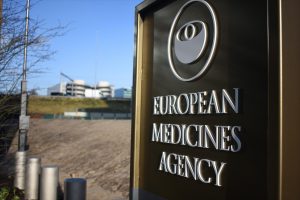Even with the coronavirus pandemic ravaging Europe and much of the world, patient advocate Lucia Monaco, PhD, of Italy remains confident that the Paris-based nonprofit she chairs will see the approval of 1,000 new rare disease therapies by 2027.
That group, the International Rare Diseases Research Consortium (IRDiRC) — launched in 2011 by the European Union and the U.S. National Institutes of Health (NIH) — falls under the umbrella of the European Joint Programme on Rare Diseases (EJP RD).

The IRDiRC had planned to host 200 experts at a March 12–13 rare disease conference in Berlin. But, like every other medical event in Europe, that much-anticipated gathering was canceled in the wake of an explosion of infections and deaths across the 27-member EU. According to published reports at press time, EU member states account for just over 41% of COVID-19 infections worldwide.
Reached by phone last week in Milan, the epicenter of Italy’s coronavirus outbreak, Monaco said she’s trying to remain optimistic.
“Although the COVID-19 pandemic is going to slow down our progress, I hope this will not hinder it in a major way,” she told BioNews Services, which publishes this website.
“This is such a time of uncertainty throughout the whole world,” Monaco said. “Of course, we’re worried about the sustainability of research activities. The economic disruption associated with coronavirus is a huge challenge, and nobody really knows how much it will hurt us.
“Funding might be diverted,” she said. “And here in Italy, researchers must stay at home and can go to their labs only if there is some urgent necessity.”
Ambitious 10-year goals
Monaco took the helm of IRDiRC in January 2019 from Christopher Austin, MD, director of the NIH’s National Center for Advancing Translational Sciences (NCATS). Her three-year term ends Dec. 31, 2021.
The consortium’s main goal is that, by 2027, anyone with a rare disease will receive an accurate diagnosis, optimal care, and available therapy within one year of coming to medical attention. Those whose disorder is not known in the medical literature will enter a globally coordinated diagnostic and research pipeline.

According to IRDiRC’s mission statement, no less than 1,000 new therapies for rare diseases will also win regulatory approval by 2027; most of them will focus on diseases without approved treatment options.
Finally, within 10 years, methodologies will be developed to assess the impact of diagnoses and therapies on patients with rare diseases.
“The initial goals when IRDiRC was launched in 2011 were to reach 200 new therapies by 2020, and to have most diseases diagnosed. We became aware in 2016 that the goal of 200 new therapies was being reached ahead of time,” she said. “That’s why in 2017 we decided to revisit our goals, which come from this revised analysis.”
New therapies developed in the EU must be approved by the European Medicines Agency, which earlier this year inaugurated its new headquarters in Amsterdam, following the agency’s departure from London in the wake of Brexit.
EJP RD, established in January 2019, operates on a five-year budget of €101 million (about $109.4 million) and involves at least 135 entities in 35 countries, including all EU member states except Cyprus. (We published a profile of its Paris-based coordinator, Daria Julkowska, PhD, in June.)
Minimum $10 million commitment
Monaco, who heads Italy’s Fondazione Telethon, has done extensive research on gene therapy as well as genetic disorders such as polycystic kidney disease.
The IRDiRC has 62 member organizations and about 120 people engaged on a volunteer basis. Members include nonprofit foundations, government health ministries, pharmaceutical companies, and patient advocacy groups.
Funders and companies must commit to invest a minimum $10 million in rare disease research and development over a five-year period. Patient advocacy groups must be umbrella organizations that represent multiple diseases over a wide geographic area.
Members of IRDiRC include the National Organization for Rare Disorders (NORD), the Canadian Organization for Rare Disorders (CORD) and Geneva-based Rare Disease International, as well as new patient organizations from Africa and South America.
“IRDiRC does not have a common pot of money to be shared among members, so there are no second agendas in participating,” Monaco said. “Everybody invests their money in their own strategic goals, but the added value of being part of IRDiRC is that what comes out of this consortium is knowledge that can be implemented locally.”
She added, “That is the daunting challenge of rare diseases: the ones that are most rare are also the most neglected by research. Sometimes they’re not studied at all, so the opportunities to develop therapeutic approaches are very limited.”

